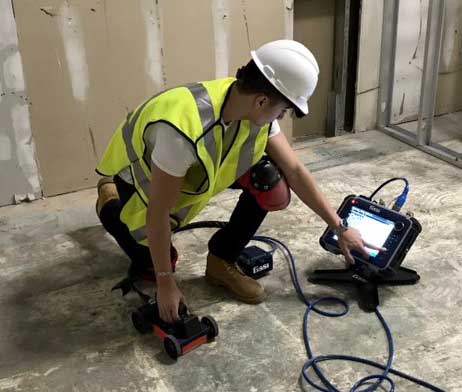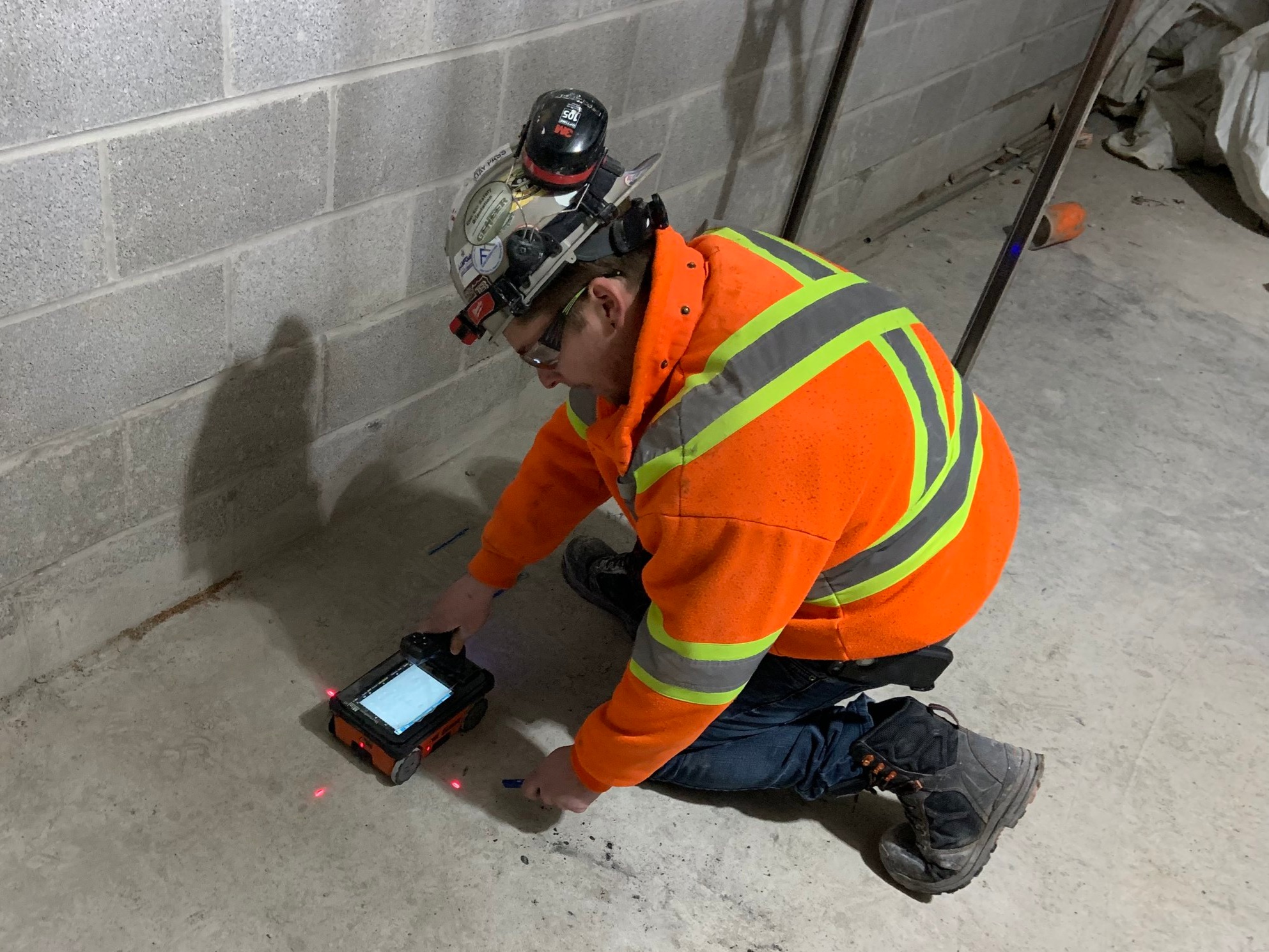Harness the Strategic Side of Concrete Scanning for Unparalleled Job Success and Top Quality Guarantee
In the realm of modern-day building and framework advancement, the use of concrete scanning technology has actually arised as an essential device for guaranteeing job success and keeping top quality requirements. This innovative technique uses a calculated edge by providing important insights into the structural stability of concrete aspects, therefore enabling notified decision-making throughout the job lifecycle. By diving right into the depths of concrete make-ups and discovering surprise abnormalities, stakeholders can proactively attend to prospective dangers, streamline operations, and enhance source allotment. Nonetheless, truth power of concrete scanning lies not just in its capability to enhance task results yet also in its ability to reinvent standard methods, establishing a new criteria for precision and performance in the construction industry.
The Importance of Concrete Scanning
Concrete scanning is a crucial action in building jobs to make sure the safety and integrity of structures. By making use of numerous scanning modern technologies such as Ground Passing Through Radar (GPR) and electro-magnetic induction, construction teams can non-destructively examine the subsurface of concrete structures to recognize prospective risks like rebar, conduits, or post-tension cords. This details is critical for task designers, supervisors, and service providers to make enlightened decisions and stay clear of expensive mistakes during the construction process.
Among the primary reasons concrete scanning is so essential is its capacity to protect against accidents and injuries on the building site. Unintentionally reducing through a real-time electrical avenue or damaging post-tension wires can have devastating effects, not just in terms of security yet also in regards to task delays and financial effects. By conducting extensive concrete scanning prior to any boring, reducing, or coring tasks, building groups can alleviate risks and create a more secure working environment for every person involved.
In addition to safety considerations, concrete scanning also plays a vital function in guaranteeing the long-lasting sturdiness and high quality of the framework. By detecting any abnormalities or defects hidden below the surface area, such as voids or delamination, early intervention can be carried out to attend to these problems prior to they intensify right into even more significant troubles. Ultimately, investing in concrete scanning is a proactive action that can conserve time, money, and sources in the lengthy run, while also supporting the highest criteria of building quality.
Advanced Innovation for Specific Outcomes

By incorporating these advanced innovations right into concrete scanning practices, building groups can enhance process, reduce task hold-ups, and make sure the overall top quality and success of the project. The accuracy and performance offered by these devices contribute dramatically to the project's success by promoting educated enhancing and decision-making high quality assurance measures.
Enhancing Job Effectiveness and Timelines

Furthermore, concrete scanning makes it possible for groups to determine possible dangers and structural weaknesses early on, permitting punctual removal and avoiding mishaps that might thwart job timelines. The real-time information provided by scanning tools facilitates informed decision-making, leading to smoother sychronisation among various trades and stakeholders. This enhanced partnership minimizes conflicts, improves productivity, and eventually speeds up task shipment.
Additionally, by proactively resolving concerns through concrete scanning, building and construction teams can abide by routines extra efficiently, minimize downtime, and maximize resource appropriation. The ability to discover covert obstacles and confirm structural honesty efficiently adds to general project performance and timelines, guaranteeing successful outcomes and client satisfaction.
Ensuring Safety And Security and Threat Mitigation

Risk mitigation strategies can be improved through the thorough info provided by concrete scanning, allowing task groups to make enlightened decisions that minimize the probability of unanticipated incidents. Furthermore, by precisely drawing up subsurface conditions, contractors can avoid expensive rework, hold-ups, and click this link damages to existing structures, further contributing to total project security and success. Implementing concrete scanning as a regular technique not only makes sure a safer workplace however also infuses self-confidence in stakeholders regarding the project's dedication to top quality and danger monitoring.
Quality Control Via Concrete Scanning
Concrete scanning plays a crucial duty in promoting quality control standards within construction tasks. By using advanced scanning technologies such as Ground Permeating Radar (GPR) and Concrete X-ray, job managers and designers can ensure the stability and quality of concrete frameworks. Through concrete scanning, potential flaws, such as gaps, cracks, or strengthening bar blockage, can be spotted non-destructively, permitting prompt interventions to keep the structural integrity of the project.
Quality control through concrete scanning not just helps in determining existing issues but likewise allows aggressive measures to avoid future problems that can endanger the safety and security and durability of the structure. By carrying out comprehensive scans at essential stages of construction, teams can validate the accuracy of structural plans, confirm the positioning of critical elements, and address any type of inconsistencies immediately. This aggressive approach decreases rework, lowers costly hold-ups, and inevitably leads to the delivery of top quality, durable structures that surpass or satisfy industry requirements.
Final Thought
In final thought, concrete scanning plays an important duty in guaranteeing project success, safety and security, effectiveness, and top quality assurance. The calculated side supplied by concrete scanning enables for aggressive threat reduction and enhances total project monitoring.
In the realm of modern building and facilities growth, the application of concrete scanning technology has emerged as an essential device for guaranteeing job success and preserving top quality criteria. By integrating these innovative technologies into concrete scanning methods, building and construction groups can improve process, lower job hold-ups, and ensure the general quality and Visit Your URL success of the job.Provided the critical nature of task performance and timelines in building and construction administration, the focus currently moves in the direction of making sure safety and mitigating risks within the task atmosphere.Concrete scanning plays an essential function in upholding top quality assurance standards within building jobs. By utilizing sophisticated scanning modern technologies such as Ground Penetrating Radar (GPR) and Concrete X-ray, project managers and engineers can guarantee the stability and top quality of concrete frameworks.